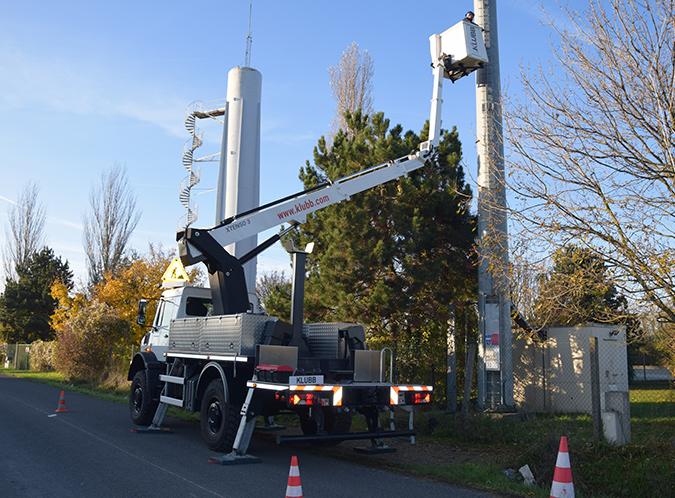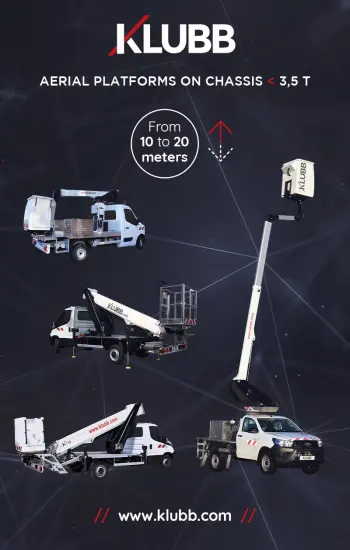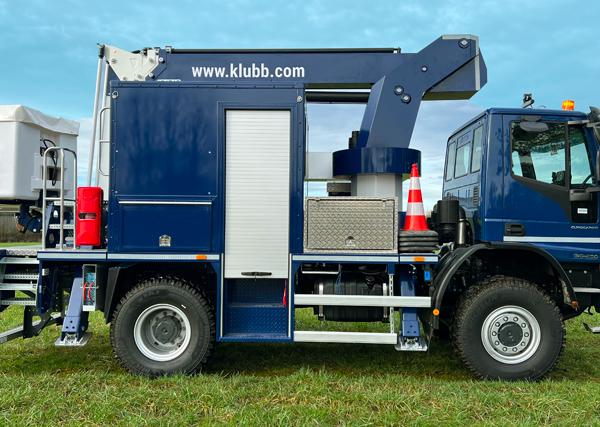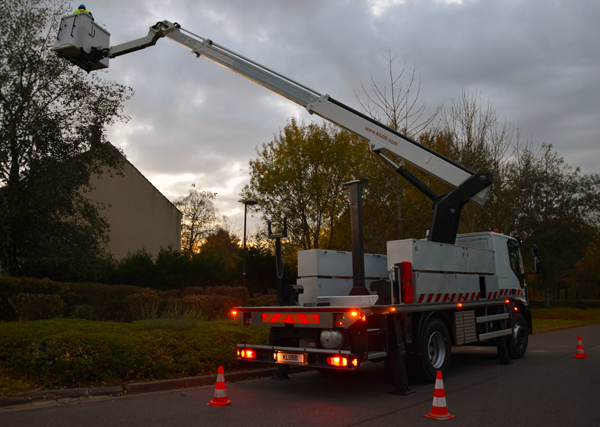
Als Hebevorrichtungen, die es Ihren Bedienern ermöglichen, in relativ großen Höhen zu arbeiten, sind die Risiken, die mit der Verwendung von Hubarbeitsbühnen verbunden sind, sehr real. Eine der häufigsten Ursachen für Unfälle beim Einsatz einer Plattform ist deren Überladung.
Um potenzielle Unfälle, die Ihren Bedienern passieren könnten, weiter zu analysieren und zu verhindern, diskutieren wir die Risiken, die mit der Überladung einer Hubarbeitsbühne verbunden sind.
Einhaltung der Vorschriften Zur Erinnerung
Die Norm AFNOR NF EN 280-1 regelt die Konformität von Hubarbeitsbühnen in Bezug auf Stabilität, Festigkeit und Sicherheit. Ohne diese strenge Regulierung würde es zweifellos täglich zu Unfällen kommen.
Zusätzlich zu dieser strengen Regulierung enthalten Hersteller wie Klubb France Gebrauchsanweisungen für ihre Hubarbeitsbühnen, um jegliches Unfallrisiko, ob geringfügig oder schwerwiegend, zu vermeiden.
Trotzdem kann es vorkommen, dass Bediener aufgrund von Nachlässigkeit, oft, oder Inkompetenz, seltener, bei der Arbeit in der Höhe verletzt werden.
Wie wir erwähnt haben, ist eine der Hauptursachen für diese Unfälle die Überladung der Plattform.
Art der Hubarbeitsbühne und Gewicht der Last
Wie Sie wissen, hat eine Hubarbeitsbühne für ihre möglichst sichere Verwendung eine Lastgrenze, die auch als maximale Tragfähigkeit bekannt ist. Diese maximale Tragfähigkeit wird mit folgender Formel berechnet:
MCC = Gewicht des Bedieners + Gewicht der Ausrüstung auf der Plattform + Gewicht der Ausrüstung im Korb
Die maximale Tragfähigkeit ist keine feste Größe und hängt weitgehend von der Art der Hubarbeitsbühne ab, die Sie oder Ihre Bediener verwenden werden. Die Tatsache, dass der Plattformkorb 1 oder 2 Bediener aufnehmen kann, verändert auch die unterstützte maximale Tragfähigkeit. So haben eine Van-Plattform, ein Lkw mit Plattform und eine Spinnenplattform nicht die gleiche MCC.
Wenn diese maximale Tragfähigkeit auch nur um ein paar Kilogramm überschritten wird, kann dies auf einer Baustelle ernste Folgen haben.
Risiken bei Überschreitung der Plattform-Tragfähigkeit
Hier sind die Risiken, die mit der Überladung einer Hubarbeitsbühne verbunden sind:
Plattformzusammenbruch
Dies ist das häufigste Risiko. Eine Überladung des Hebezeugs führt zu einem Ungleichgewicht und verursacht ein Umkippen bis zum Sturz.
Bedienerquetschung
Selbst ein leichtes Kippen der Hubarbeitsbühne kann dazu führen, dass der Bediener gegen eine Gebäudewand gequetscht wird.
Verkehrsunfall
Wenn die Plattform auf die Straße fällt, können andere Verkehrsteilnehmer ernsthaft verletzt werden.
Fußgängerquetschung
Wenn die Plattform auf einen Gehweg fällt, können Fußgänger gequetscht werden.
Wenn es eine Sache gibt, die man aus diesem Artikel mitnehmen sollte, dann ist es, immer die empfohlenen Lastgrenzen in Hubarbeitsbühnen zu respektieren, wie vom Hersteller empfohlen. Diese maximalen Tragfähigkeiten sind nicht dazu da, Sie in Ihrem täglichen Leben einzuschränken, sondern vielmehr, um es zu optimieren.




